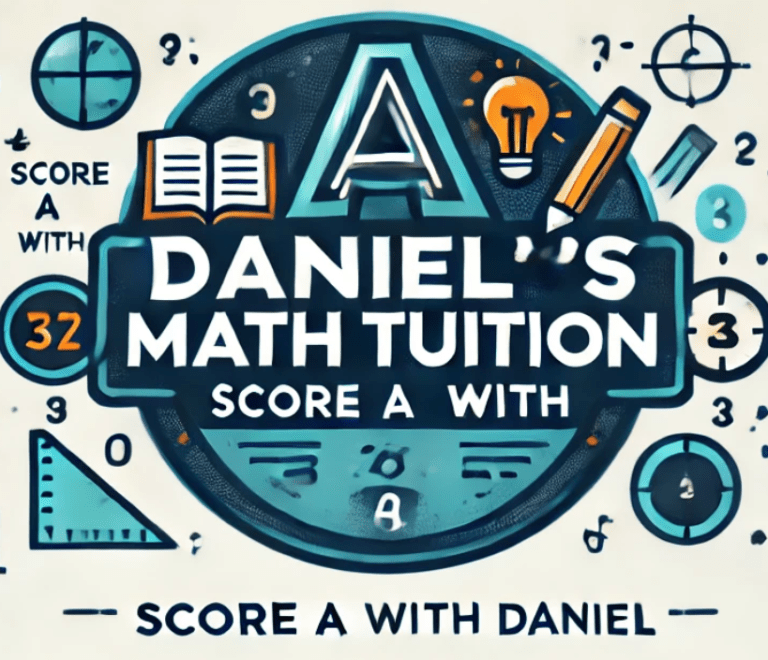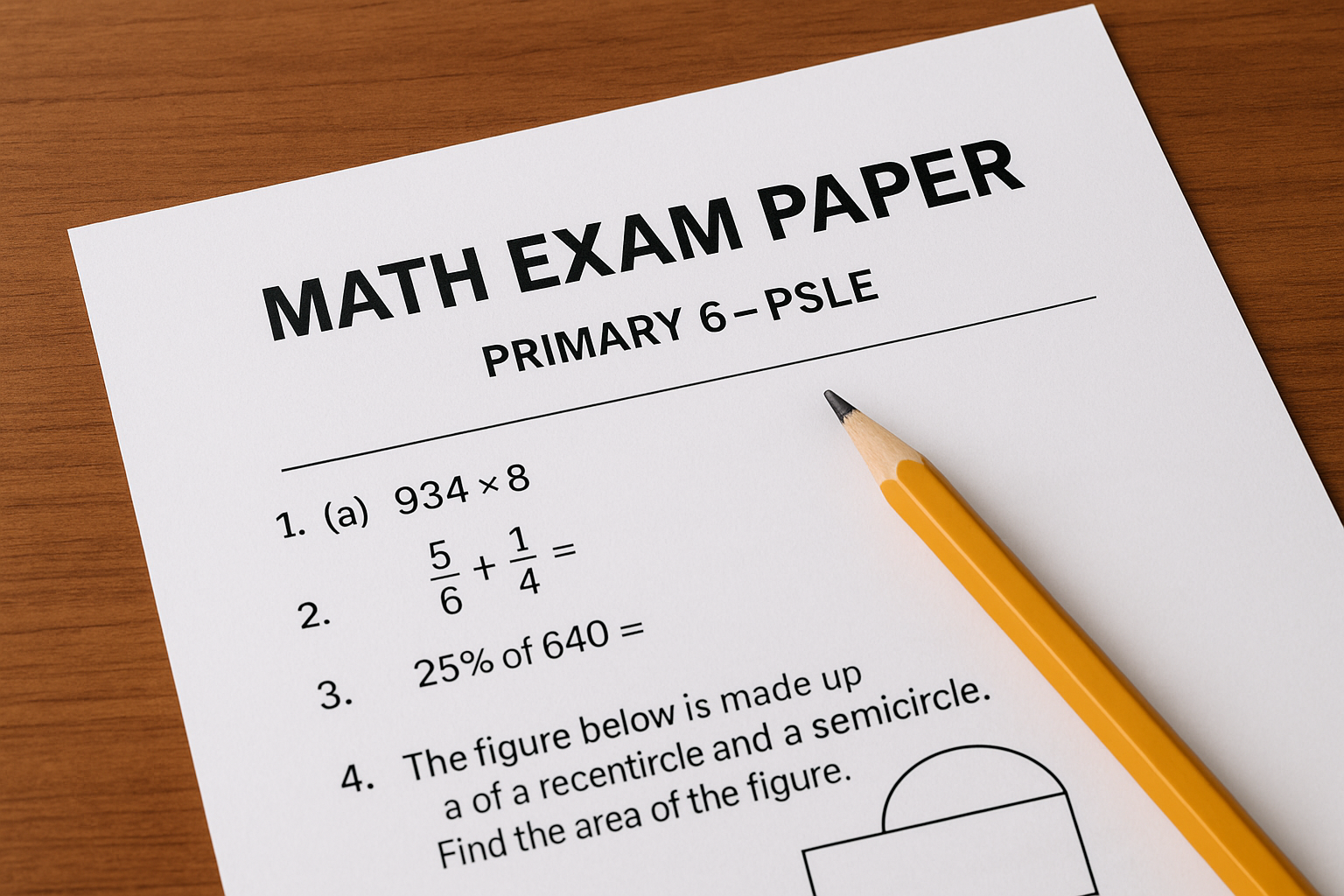Struggling with math word problems is incredibly common — especially for primary school students in Singapore.
Word problems can be confusing because they don’t just test math skills — they also test reading comprehension, logical reasoning, and the ability to apply the right method.
At Daniel’s Math Tuition, we specialise in solving word problems in math, guiding students to think clearly, spot important clues, and use proven strategies to solve even the most difficult questions.
In this article, we’ll share 7 powerful tips to help your child master problem sums with confidence — whether they’re preparing for the PSLE or just trying to improve their grades.
Why Word Problem Solving Skills Matter
Learning how to solve math word problems is more than just an academic task. These questions build lifelong skills:
-
Critical thinking
-
Logical reasoning
-
Real-life application of math
From calculating change to reading timetables, solving word problems in math equips your child to handle real-world scenarios.
But first, they need the right strategies — and that’s what we teach at Daniel’s Math Tuition.
7 Proven Strategies for Solving Word Problems in Math
1. Read the Question Carefully — Twice or More
Many students rush through problem sums. This causes them to miss key information or misunderstand what the question is asking.
Encourage your child to read slowly and ask:
-
What is the question asking for?
-
What information is already given?
-
Is this a comparison, part-whole, or transfer problem?
👉 Example:
Ali has $120 more than Ben. Ben has $60 more than Carol. If they have $600 in total, how much does Ben have?
Without careful reading, your child might miss that this is a comparison problem involving 3 people.
2. Spot Keywords That Reveal the Operation
In word problems, keywords give hints about what math operation to use:
-
“In total”, “altogether” → Addition
-
“Left”, “how many more”, “difference” → Subtraction
-
“Each”, “equal groups” → Multiplication or Division
We teach students to underline or circle important words and numbers to focus their attention.
3. Understand the Context Before Solving
Before diving into calculations, students must understand the scenario.
-
Is this about money, time, distance, or items?
-
Can your child rephrase the question in their own words?
If they understand the story, solving becomes much easier. This is a key step in mastering how to solve math word problems effectively.
4. Use Model Drawing to Visualise
In Singapore Math, model drawing is one of the most powerful tools for solving word problems. It helps students visualise quantities and relationships.
Use model drawing for:
-
Comparison problems
-
Transfers between people
-
Equal sharing or part-whole relationships
👉 Example:
Tom has 3 times as many stickers as Jerry. Together, they have 120.
By drawing 3 boxes for Tom and 1 box for Jerry, students can clearly see how to divide and solve.
5. Use the Right Strategy: Not Just One Way
There’s more than one way to solve a problem. We train students to use different strategies based on the type of word problem:
-
Guess and check
-
Working backwards
-
Drawing a table
-
Using equations or algebra
-
Breaking the problem into parts
Flexibility in approach is key for solving word problems in math successfully.
6. Check the Answer: Does It Make Sense?
After finding the answer, we always teach students to do a sense check:
-
Is the number too big or too small?
-
Did I answer the right question?
-
Does this fit with the story?
Many students lose marks due to small mistakes — even if their working is correct.
7. Practise with Real Exam Questions
To improve speed and confidence, we use real PSLE-style word problems in our classes. Practice helps students spot familiar patterns and choose the right strategy quickly.
Common types of word problems we practise include:
-
Money and change
-
Internal transfers
-
Part-whole problems
-
Equal distribution
-
Comparison problems
Types of Word Problems in Primary Math (And How to Solve Them)
Understanding what type of problem you’re facing helps you pick the best method:
🔹 Comparison Problems
“More than,” “less than,” or “times as many”
→ Use bar models and multiplication/division
🔹 Transfer Problems
“Gave away”, “received”, “how many left”
→ Use before-and-after thinking or model drawing
🔹 Part-Whole Problems
Given the total and one part → find the other part
→ Use addition or subtraction
🔹 Rate and Time Problems
Use formulas like speed = distance ÷ time
→ Understand units and conversions
🔹 Algebra/Unknown Value
Set up equations (e.g., x + y = 48)
→ Use substitution or model reasoning
How Parents Can Help with Solving Math Word Problems
You don’t have to be great at math to help your child. Try asking:
-
“Can you show me how you got that answer?”
-
“What is the question really asking?”
-
“Is there another way to show this?”
This helps your child think logically, explain their reasoning, and build confidence.
Daniel’s Math Tuition – Specialists in Problem Solving
At Daniel’s Math Tuition, we focus on building strong problem-solving skills in every student.
We help students who:
-
Struggle with understanding word problems
-
Lack confidence in choosing the right strategy
-
Make frequent careless mistakes
-
Want to improve PSLE math performance
✅ We teach step-by-step approaches that are easy to follow
✅ We use model drawing and real exam questions
✅ We correct common error patterns early
✅ We help students build both accuracy and speed
📞 Ready to help your child solve word problems with confidence?
Contact Daniel’s Math Tuition today for small group or 1-to-1 classes.


